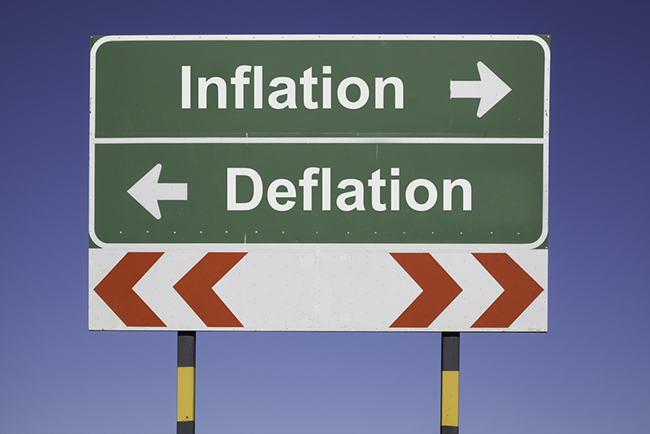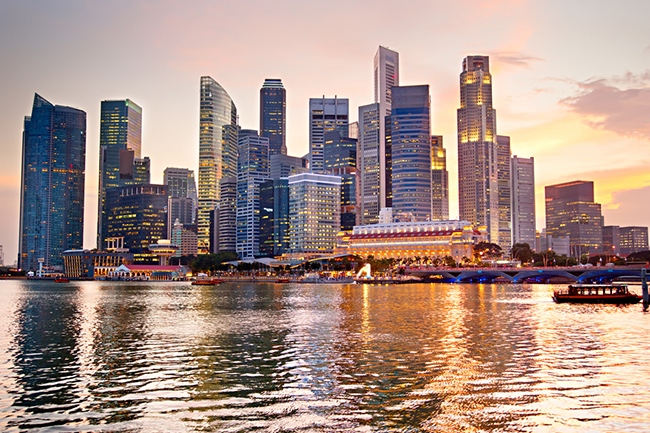Singapore experienced deflation for two straight months in November and December 2014, but worryingly, many Singaporeans seem unconcerned with this development. Here’s why you should keep a careful eye on Singapore deflation.
—
When the Department of Statistics released Singapore’s November consumer price index two months ago, there was a mixture of concerned murmurs and expectant nods from many local economists. For the uninitiated, the consumer price index (CPI) measures the collective price of a variety of consumer goods and services in a country and is used by governments as a tool to measure price and inflation pressures.
For the first time in five years, the Singapore CPI for November dipped into the red (-0.3 percent), dragged down by private transport costs, petrol pump prices, and a softer housing rental market. However, if you removed the costs of private transport and accommodation, core inflation was at 1.5 percent, a 0.2 percent decline from the previous month.
The bleeding in November was stemmed slightly in December with the CPI rising slightly to -0.2 percent, but the negative numbers signalled yet another deflationary month for Singapore. Analysts were expecting these numbers mainly because of the global drop in oil prices and the Monetary Authority of Singapore has acted quickly, reducing the slope of its policy band to slow down the appreciation of the currency i.e. weakening the Singapore dollar against other currencies. This makes Singapore exports more attractive although it means that your overseas holidays will become more expensive. Still, the spectre of sustained Singapore deflation hangs ever-present, especially with the negative 2015 global economic outlook.
Why is Deflation Bad
Theoretically, falling prices sound wonderful for consumers since everything is cheaper and your dollar stretches further. While that’s true, deflation is bad for a country if it continues for a prolonged period of time.
When people expect falling prices, they become less willing to spend, which in turn means that they’re less willing to borrow. Taking up a loan means that you’ll be effectively paying more than the amount you borrowed, even though it is the same amount on paper. When no one is borrowing any money, the economy stagnates since there is no financial activity. Most people would rather put their paper cash in a tin as it provides guaranteed returns!
Japan is the most oft-quoted example of a country that has been grappling with chronic deflation for the past decade. At the beginning of the 1990s, the Japanese experienced inflated real estate and stock prices due to easy credit – banks in Japan lent money to anyone who came knocking. Due to this, inflation rose rapidly. In an attempt to keep speculation in check, the Japanese central bank raised interest rates. Prices crashed and have never recovered since then. Corporations, unable to sell their products and services, made cutbacks to their workforce while wages fell. As falling wages chased falling prices, Japan became stuck in a deflationary spiral. Even though the Japanese government has been running a fiscal deficit since 1991 to stimulate borrowing, the country’s economy is still stumbling over the financial obstacles and remnants kicked up by its financially wayward past. Today, Japan has one of the highest debt to GDP ratio in the world – 240 percent.
Why Singapore Is Safe (For Now)
At the moment, in Singapore, the deflationary pressure is mainly affecting goods and services that we don’t regularly consume. Everyday items such as food and groceries are still experiencing manageable inflation. Couple this with the tight labour market (Singapore’s unemployment came in at an admirable 1.9 percent in the third quarter of 2014) and the quick steps taken by MAS to combat global economic pressure mean that Singapore is still relatively safe from the gaping jaws of deflation that’s already biting on the heels of the Eurozone.
For 2015, MAS has forecasted core inflation, a usually better gauge for household expenses, to come in at between 0.5 and 1.5 percent and, for the first time since 2009, expects headline inflation to be between -0.5 and 0.5 percent.
The last time Singapore experienced deflation for six consecutive months, which occurred at the height of the global financial crisis, the country went into a recession. The similarities to the events happening around the world today are eerily similar to that tumultuous period.
The Eurozone is experiencing deflation on a widespread scale, one that economists had been expecting for a long time and that the European Central Bank had been prepared for – the bankers recently launched a quantitative easing programme, essentially injecting close to a trillion Euros into the monetary system in an attempt to stimulate demand. Only time will tell whether this controversial, last-ditch move will work. However, if this move fails to resuscitate a tottering patient on his last legs, then his collapse will trigger a tsunami across the world.
For our country to survive this possible impending financial storm, the key is in making sure that the Singaporean employee remains employable, competitive, affordable, and something that is rarely mentioned, happy. It’s a complicated and difficult equation that, honestly, is almost impossible to solve. And in our relentless push for employability, competitiveness and affordability, our happiness has been sacrificed by many cutthroat companies.
In the past, Singapore’s welcoming business environment was the cornerstone of our success. Companies and investors poured their money and time into our country, creating a lot of jobs for the labour market. For a long time, Singaporeans were happy, which contributed to our meteoric rise. However, our progress has slowed down due to a wide variety of factors and, in the process, our neighbouring countries are catching up quickly.
This is the new world we’re living in, and it’s time we face up to the harsh, uncomfortable reality –that we’re losing our edge.
Deflation Affecting Investors and Non-investors
With all these information, it’s quite clear how Singapore deflation negatively affects not just the stock markets but everyday life in our country. Companies, both listed and non-listed, will start experiencing problems, which will cause panic in the markets. From then on, it’s only a matter of time before your charts resemble the outline of the Himalayan mountain range.
Is there anything that you can do if the deflationary trap gets its claws on the stock market?
If the case of Japan is anything to go by, the only thing you can do is to, well, pray.
When it comes to jobs, Singapore’s labour market, which is already experiencing heated competition from competitive neighbouring economics, cannot possibly withstand the body blows of deflation. Once again, when Japan was sucked into the deflation vortex, wages stagnated. To put things into perspective, real salaries in Japan fell 13 percent and economic output descended to levels that were last seen in the 80s.
The upcoming Singapore Budget 2015 will apparently address the concerns of mid-career, middle-aged Singaporeans “who want good, fulfilling careers”. Behind the scenes, we’re certain the collective heads of the different agencies have already anticipated and planned for the different possibilities and it seems that they’re trying to solve the happiness portion of the productivity equation as well.
In the meantime, keep an eye on the quiet Singapore deflation. It was the precursor to the previous recession and it might be signalling the next one to come.
4 February 2015
https://www.drwealth.com/2015/02/04/singapore-deflation-no-one-talking/?utm_medium=DISPLAY&utm_source=OUTBRAIN&utm_campaign=4C



No comments:
Post a Comment